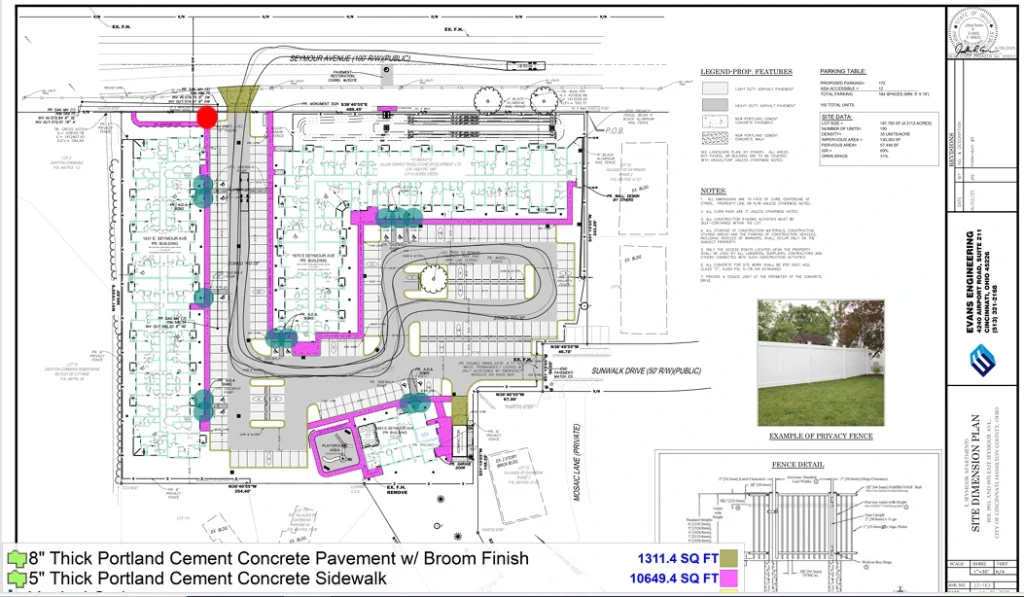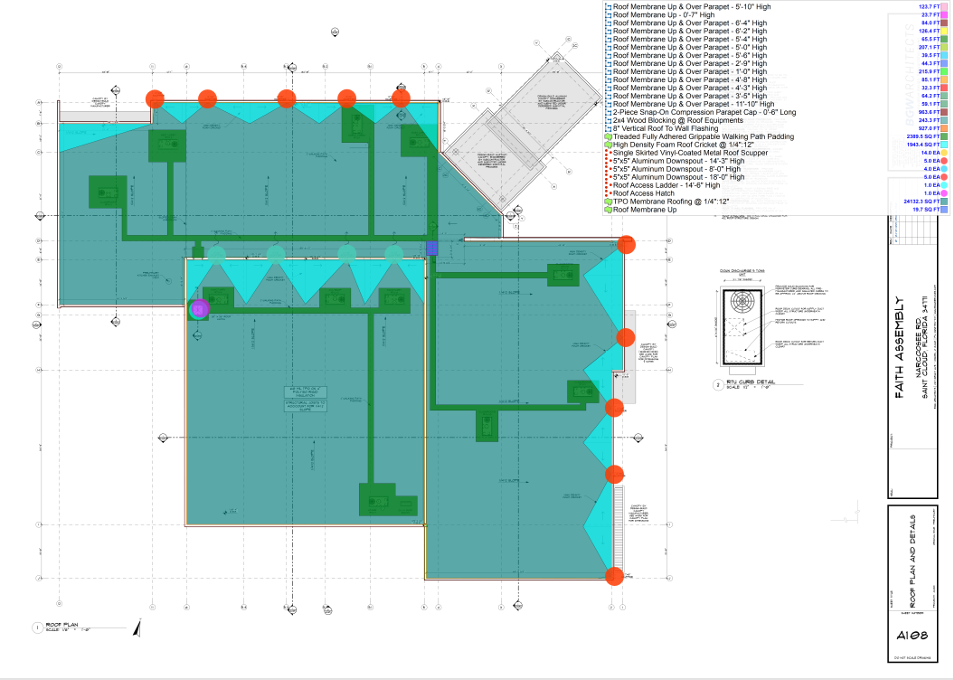Why Your Estimate Is More Than a Number?
In construction, your estimate isn’t just a line item on a spreadsheet—it’s the heartbeat of the entire project. I’ve spent years walking jobsites, reviewing blueprints, and crunching numbers, and I can tell you this: a single oversight during takeoff can derail timelines, inflate budgets, and even cost you the bid.
Whether it’s a residential remodel or a multi-million-dollar commercial job, the ability to forecast labor, materials, and equipment costs accurately is what separates profitable contractors from those constantly playing catch-up.
And let’s face it—nobody likes a surprise when the budget’s already stretched thin.
I’m often asked by contractors, “Should I invest in estimating software or keep using free tools and spreadsheets?” My answer: it depends on whether you’re trying to win with confidence—or just hoping to get by.
Our Professional Estimating & Takeoff Services
At Utopiantakeoffs, we’re not just estimators—we’re industry experts who understand every detail that goes into a successful construction project. With years of hands-on experience and the latest paid tools like PlanSwift, STACK, and RSMeans Data, we deliver precise, reliable, and fully scoped estimates you can build on. Whether you’re bidding on a residential remodel or a large-scale commercial job, our takeoff and estimating services help you reduce risk, save time, and win more bids with confidence.
Table of Contents
Free vs. Paid Construction Estimating Tools
In today’s competitive construction landscape, many contractors and small firms look for ways to cut overhead without sacrificing accuracy. That’s where free construction estimating tools come into play. While they might not offer the full power of premium software, they’re a good starting point—especially for smaller projects, tight budgets, or teams exploring digital workflows for the first time.
What Do Free Estimating Tools Offer?
Most free tools provide the basics of what you need to prepare a cost estimate, including:
- Digital takeoff capabilities (limited scale)
- Pre-built templates for residential or commercial projects
- Material quantity calculators
- Basic cost estimating spreadsheets
- Printable reports and bid summaries
- Simple project tracking
- Access to limited cloud storage or file sharing
Tools like the STACK Free Tier, Buildxact Free Trial, or the PlanSwift Viewer allow you to experience digital takeoff software without committing financially. These tools are ideal for evaluating workflows or managing small-scale jobs.
Pros of Free Estimating Tools
For many general contractors or solo estimators, free options offer:
- Zero Cost to Start: No upfront investment makes it easy to explore and experiment.
- Fast Accessibility: Many are cloud-based and don’t require complex installation.
- Low Learning Curve: Simple interfaces make them easy to navigate.
- Risk-Free Testing: Great for evaluating software before committing to a paid plan.
- Useful for Small Projects: Perfect for minor renovations, handyman jobs, or subcontractor scopes.
Limitations of Free Estimating Tools
However, there’s a trade-off that project managers should be aware of:
- Limited Features: Free tiers often exclude key features like 3D takeoffs, detailed assemblies, and integration with accounting software.
- No Automation: Manual input is still required for most elements, increasing the risk of human error.
- Lack of Real-Time Cost Data: Free tools often don’t update pricing automatically or access cost databases.
- Minimal Support: Customer support is usually limited or unavailable on free versions.
- Not Scalable: As your project complexity grows, these tools quickly fall short.
Real-World Example from the Field
I recently worked with a roofing subcontractor bidding on a multi-unit residential project. He used the free version of STACK for takeoffs and combined it with a cost spreadsheet. While it worked for the initial bid, he faced challenges adjusting scope changes due to the lack of automation. Eventually, he outsourced the estimate to a professional estimator using full-version software. The turnaround was quicker, the numbers tighter, and he won the bid with higher confidence.
Who Should Use Free Estimating Tools?
Free tools are ideal for:
- New contractors or startups testing digital estimating workflows
- Subcontractors working on low-volume or less complex scopes
- Firms evaluating software before upgrading to a premium plan
- DIY users or owners looking to estimate basic construction costs
- Teams exploring outsourced estimating services but not ready to commit
In short, free estimating tools provide a valuable starting point for understanding digital takeoffs, cost estimating, and bid management. However, when accuracy, speed, and integration become mission-critical, it may be time to look beyond “free” and invest in something that grows with your business.
Paid Estimating Tools: Are They Worth the Investment?
For construction professionals managing large, complex projects or bidding competitively, accuracy isn’t optional—it’s essential. While free estimating tools can help you dip your toes into the digital space, paid construction estimating software offers the depth, speed, and reliability that growing teams and contractors need to stay ahead.
As a seasoned construction estimator, I can confidently say: if you’re serious about reducing costly errors, improving bid accuracy, and increasing win rates, a paid tool is more of an asset than an expense.
What Do Paid Estimating Tools Typically Include?
Paid tools are built for professional-grade estimating and usually include robust features such as:
- Automated material takeoffs with point-and-click accuracy
- Pre-built assemblies and templates for repeat jobs
- Real-time pricing databases (e.g., RSMeans Data Online)
- Cloud collaboration tools for team access and version control
- 2D/3D model integration for BIM workflows
- Customizable reports and proposal generation
- Dedicated customer support and training
- Integrations with accounting, scheduling, and project management tools
Tools like PlanSwift, ProEst, RSMeans Data Online, and STACK Premium are trusted by estimators, project managers, and large construction firms across the U.S. because they speed up workflows while improving accuracy.
Advantages of Paid Estimating Software
If you’re managing multiple jobs, subcontractors, or working with tight deadlines, here’s what you gain:
- High Precision: Reduce human error through automated takeoffs and real-time cost updates.
- Speed & Efficiency: Save hours (even days) with one-click calculations and smart templates.
- Scalability: Easily manage estimates for projects of any size or scope.
- Team Collaboration: Cloud access ensures everyone is working from the same data set.
- Professionalism: Generate branded, client-ready estimates and proposals.
- Support and Training: Access help when you need it, plus learning resources to maximize value.
Cost Considerations and Transparency
Paid tools vary in pricing based on features, user seats, and support levels. For example:
- PlanSwift: One-time license fee, with optional add-ons.
- STACK Premium: Subscription-based, ideal for teams and volume takeoffs.
- RSMeans Data Online: Subscription model with national and regional pricing data.
- ProEst: Cloud-based platform with custom pricing for enterprise-level estimating.
While upfront costs may seem steep, many contractors report a strong ROI within months—especially when they begin winning more bids, reducing overruns, and saving time.
Real-World Insight from the Jobsite
I once helped a commercial contractor who struggled with inconsistent bids and missed scope items using spreadsheets. After switching to ProEst and training the team on template-based estimating, the firm reduced bid prep time by over 40% and improved profitability by winning more precise, fully scoped projects. Their investment in software paid for itself within two awarded jobs.
Who Benefits Most from Paid Tools?
- General contractors managing multiple projects or team members
- Estimating teams looking to standardize workflows and collaborate efficiently
- Subcontractors needing advanced assemblies and job-specific takeoffs
- Firms bidding on government, commercial, or high-volume jobs
- Construction clients and developers who want clear, reliable estimates before starting work
Paid estimating tools are worth the investment if your goals include speed, accuracy, scalability, and professionalism. They help you move beyond reactive estimating into strategic, data-backed decision-making that drives growth.
Feature Comparison: Free vs. Paid Estimating Tools Side-by-Side
In the world of construction, every bid counts—and so does every cost estimate. Whether you’re just starting out or managing multimillion-dollar projects, your estimating tool is one of your most valuable assets. The right platform doesn’t just help you calculate costs—it helps you win more work, reduce risk, and deliver with confidence.
As a construction estimator who’s worked with both small and large teams, I’ve evaluated dozens of tools. Below is a practical side-by-side comparison to help you decide what suits your business needs best.
Feature Breakdown: Free vs. Paid Estimating Tools
| Feature | Free Estimating Tools | Paid Estimating Tools |
| Material Takeoff Capabilities | Basic or manual, limited accuracy | Automated, detailed, highly accurate |
| Templates & Assemblies | Few or generic | Custom, trade-specific, repeatable |
| Real-Time Pricing Data | Usually unavailable or manual updates | Integrated cost databases like RSMeans |
| Cloud Collaboration | Rare or very limited | Full multi-user collaboration in real-time |
| 3D/BIM Model Support | Not supported | Supported by advanced tools (e.g., STACK, ProEst) |
| Integration with Other Tools | Minimal (manual exports/imports) | Seamless integration with accounting, scheduling software |
| Customer Support & Training | Limited or DIY support | Dedicated support, onboarding, and knowledge base access |
| Scalability | Good for small, simple jobs | Suitable for large, complex, multi-trade projects |
| Accuracy and Speed | Manual, time-consuming, higher error risk | Fast, consistent, data-driven outputs |
| Cost | $0 – Easy to access and test | Varies ($500 – $3,000+ annually depending on features) |
Why This Comparison Matters?
When choosing between free and paid estimating tools, you’re not just choosing software—you’re choosing how confident and competitive your estimates will be. Free tools can be great for short-term solutions, especially for subcontractors or small-scale builders. But if you’re bidding on commercial, institutional, or multi-trade jobs, precision, automation, and collaboration become essential.
So, Which One Is Right for You?
Use Free Estimating Tools if:
- You’re new to estimating software and want to experiment
- You manage small residential or renovation projects
- Your budget doesn’t allow for upfront software investment
- You don’t need integrations or real-time pricing
Choose Paid Estimating Tools if:
- You need fast, accurate takeoffs for complex bids
- You want to scale your business and streamline estimating workflows
- You require real-time data, integrations, and team collaboration
- You’re considering outsourcing your estimating and want transparency in the process
In short, the right tool empowers better decisions, more reliable budgets, and fewer surprises during construction. Whether you choose to handle estimating in-house or outsource to a professional service, understanding these tool differences helps you protect your profit margins—and your reputation.
Who Should Use Free Estimating Tools? (Use Cases)
Not every project requires a high-end software subscription—and not every team is ready to invest in one. That’s where free estimating tools become incredibly valuable. If you’re just getting started in the construction business, managing small-scale jobs, or simply exploring how digital estimating works, free tools can offer a practical stepping stone.
As a construction estimator, I often recommend free estimating platforms for specific groups who can benefit without stretching their budgets.
DIY Builders and Homeowners
If you’re tackling your own remodel, building a small addition, or just want to understand construction costs before hiring a contractor, free estimating tools are a great starting point. Many of these tools include:
- Simple cost calculators for materials and labor
- Pre-set templates for kitchens, bathrooms, decks, etc.
- Basic takeoff tools to measure areas from floor plans
These tools allow DIYers to stay within budget and make informed decisions—even if they eventually hire professionals.
Small Contractors with Limited Budgets
For solo tradesmen or small teams working on residential jobs, budgeting for expensive software can be a challenge. Free tools like the STACK Free Tier or Buildxact trials can help manage:
- Small renovation projects
- Roofing, siding, or plumbing jobs
- One-off estimates for local bids
They offer basic takeoff and estimating capabilities without the financial burden, allowing small contractors to stay competitive in tight markets.
Learning and Trial Phases
If you’re just entering the construction field—or training a new estimator—free tools offer a low-risk learning environment. You can get familiar with:
- Digital takeoff processes
- Cost breakdowns by category
- Common estimating formats used in the industry
🎓 Tip from the field: I’ve mentored junior estimators who started with Excel templates and later transitioned to advanced software like ProEst after understanding the fundamentals.
For students, apprentices, or construction pros trying to decide whether to invest in paid tools or outsource estimates, free options provide the hands-on experience needed to make an informed choice.
Build Relatability and Trust
If you’ve ever tried to balance tight budgets while managing multiple quotes or juggling change orders, you know how stressful estimating can be. Free tools aren’t perfect—but they help bridge the gap between manual methods and professional estimating services.
By starting with free options, you can:
- Reduce estimation errors compared to guesswork
- Get a feel for digital takeoff without a subscription
- Build client trust with clearer cost breakdowns—even as a small business
Perfect For You If…
- You’re a DIY builder wanting control over home project costs
- You’re a small contractor doing 1-2 jobs at a time
- You’re training or exploring the construction estimating process
- You’re testing digital tools before committing to outsourcing or investing

Free estimating tools give you the ability to learn, budget smarter, and prepare realistic bids—even without a big investment. When the time comes to scale or tackle more complex jobs, you’ll be ready to either upgrade your software or confidently outsource to a professional estimating service.
Who Should Invest in Paid Estimating Tools? (Use Cases)
In construction, growth brings complexity. The larger the project or portfolio, the greater the need for accurate, scalable, and streamlined estimating workflows. Free tools may work for small jobs—but when you’re bidding on commercial projects, managing multiple sites, or leading a growing team, paid estimating software becomes a strategic investment, not just a convenience.
As someone who’s worked with GCs, subs, and developers across every stage of a build, I’ve seen how the right software transforms operations.
Growing Construction Firms
As your business scales, managing multiple bids, scopes, and clients gets challenging. Manual estimating or free tools can’t keep up with the volume and complexity. Paid tools offer:
- Customizable templates to reduce repetitive work
- Centralized data management across projects
- Team collaboration through cloud-based access
- Time-saving automation for faster turnaround on bids
General Contractors Needing Precision
General contractors bidding on commercial or institutional work need high levels of accuracy, traceability, and documentation. Paid tools like ProEst, PlanSwift, and RSMeans Data Online provide these:
- Automated takeoffs with audit trails
- Real-time cost databases to reflect current market prices
- Scope linking for trade breakdowns and subcontractor pricing
- Custom reporting for owner presentations and proposal submission
When you’re dealing with tight margins, aggressive schedules, and multiple trades, guesswork isn’t an option. Precision equals profit.
Businesses Managing Multiple Projects
If you’re overseeing a portfolio of ongoing builds, paid software helps you standardize and scale. Whether it’s commercial, civil, or multi-family residential, you’ll benefit from:
- Consistent estimating formats across the company
- Cloud storage for all takeoff files and estimate versions
- Seamless integration with project management platforms
- Collaborative workflows across estimators, PMs, and executives
Ideal for You If…
- You’re a general contractor bidding on large-scale projects
- You’re a growing firm hiring more estimators and managing higher volumes
- You manage multi-phase or multi-location projects
- You need integration with other platforms (scheduling, accounting, ERP)
- You’re considering outsourcing estimates but want a strong in-house foundation
Build Trust Through Accuracy
Let’s be honest—clients notice when your numbers are off. With paid estimating tools, you’re not just saving time—you’re building credibility, winning better jobs, and protecting your margins. In a competitive market, accuracy and professionalism win contracts.
Investing in paid estimating software is a strategic move for firms that are ready to level up—whether that’s through streamlined workflows, better data, or tighter collaboration. And for those still on the fence, outsourcing your estimates to a qualified estimator using these platforms is a smart alternative that still gets you the results without the upfront software cost.
What Industry Experts Say: Real Voices & Testimonials
When it comes to choosing the right estimating software, hearing from real users—those in the trenches of construction—can offer more clarity than feature lists alone. Industry professionals consistently emphasize the importance of accuracy, speed, and ease of use in their decision-making process. Below are curated insights and testimonials from trusted platforms like G2, Capterra, Reddit, and construction tech blogs to help you see what’s really working in the field.
Trusted Reviews on Paid Estimating Tools
“PlanSwift saved us hundreds of hours annually.”
— Verified user on G2
“As a general contractor, I rely on PlanSwift for accurate takeoffs and cost estimates. The ability to import blueprints and calculate areas within minutes has transformed how we bid.”
“STACK is ideal for growing teams and remote collaboration.”
— Capterra Reviewer
“Our team uses STACK to manage estimates across multiple states. The cloud-based platform lets us work in real-time, which is critical when juggling several bids at once.”
“RSMeans Online ensures we never underbid.”
— Construction Manager on an industry blog
“Access to localized, real-time material and labor pricing through RSMeans is a game-changer. It helps us stay competitive without cutting corners.”
These reviews highlight how paid tools streamline workflows, reduce errors, and support data-backed bidding strategies.
What Reddit Users and Estimators Are Saying About Free Tools?
“Free tools work—but only to a point.”
— r/ConstructionEstimating Reddit Thread
“For one-off small jobs or learning the ropes, free tools are okay. But the moment you need detailed scope breakdowns or revisions, you hit a wall.”
“Free STACK tier was great for my first few bids.”
— Small contractor, Reddit user
“I used STACK’s free plan to test it out. It gave me enough to work with on smaller renovation projects. I later upgraded once I started managing multiple jobs.”
Key Takeaways from Industry Insights
- Accuracy Drives Profitability: Estimators agree that reliable numbers lead to stronger bids and fewer change orders.
- Time Is Money: The ability to produce fast, repeatable estimates is a top-rated feature in paid tools.
- Support and Training Matter: Access to customer service and onboarding is a clear benefit of premium platforms.
- Free Tools Have a Place: They’re helpful for beginners, testing workflows, or very small projects—but not enough for long-term growth.
Expert Insight from the Field
From my own experience, I’ve worked with firms that began on spreadsheets and free takeoff tools. While they managed at first, growth created friction—missed deadlines, inconsistent estimates, and frustration from clients. After moving to ProEst with cloud access and customizable assemblies, their estimating team became more efficient and accurate, leading to higher win rates and happier clients.
What This Means for You?
If you’re still deciding whether to invest in paid software or outsource your estimating, these testimonials provide real-world validation. What matters most is consistency, accuracy, and adaptability—no matter the tool.
And if you’re exploring outsourced estimating services, knowing that these experts use industry-leading tools like PlanSwift, STACK, and RSMeans should give you peace of mind.
How to Choose the Right Estimating Tool for Your Business?
Whether you’re a solo contractor bidding on home remodels or a project manager overseeing multi-million-dollar developments, one thing remains true—accurate estimating is the foundation of every successful construction project. But with so many tools on the market, how do you choose the right one for your needs?
As a seasoned construction estimator, I recommend stepping back and looking at the big picture. Your estimating tool should not only meet your current project demands—it should support your growth, accuracy, and efficiency in the long run.
Consider Your Project Volume and Complexity
Start by asking:
- How many projects do you estimate each month?
- Are they residential, commercial, or institutional?
- Do your jobs involve multiple trades or phases?
If you’re bidding on occasional renovation work, a free tool or spreadsheet template might suffice. But if you’re juggling multiple complex projects, automation, real-time pricing, and collaboration become crucial—making paid tools a better fit.
Evaluate Your Need for Support and Training
Not all teams have in-house tech expertise. If your estimators or PMs need:
- Ongoing support
- Onboarding assistance
- Access to webinars or training docs
…then investing in a paid solution with live support (like ProEst or PlanSwift) is well worth it. It ensures you’re not stuck mid-estimate with a software issue you can’t solve.
Try Free Trials First
Nearly every top estimating platform offers:
- Free trials (7 to 30 days)
- Limited-access plans to test key features
- Viewer-only versions for takeoff practice
Use these to test the user interface, workflow, and accuracy. Compare your trial estimates to your current process and see where improvements can be made.
Pro tip: During a trial, run one of your recent project estimates through the software and see how the results compare. It’s the best way to evaluate fit.
Think Long-Term ROI, Not Just Upfront Cost
It’s easy to get hung up on monthly or annual fees—but estimating software should be viewed as an investment, not an expense. Consider the ROI in terms of:
- Time saved on bid preparation
- Increased accuracy (fewer cost overruns)
- Higher bid win rate
- Fewer mistakes and rework
- Better client confidence and retention
Example: A commercial GC I work with saw a 25% increase in successful bids after switching from Excel to RSMeans Data Online and building a custom assembly library in ProEst.
Quick Decision Checklist
- Are you managing multiple or complex projects?
- Do you need real-time pricing or scope control?
- Is your team growing or collaborating remotely?
- Are you exploring outsourcing but want control and clarity?
If you answered “yes” to most of the above, a paid estimating tool or outsourcing to professionals using those tools may be the smartest move for your business.
Conclusion:Free vs. Paid Construction Estimating Tools
In construction, your estimates aren’t just numbers on a page—they’re the foundation of your entire project. The accuracy of your cost estimates directly impacts your budget, your profit margins, your scheduling, and your client relationships. Whether you’re estimating a kitchen remodel or a 100,000-square-foot commercial facility, the right estimating tool is the one that helps you win work and deliver with confidence.
It’s not simply a question of free vs. paid—it’s about choosing the tool that fits your business goals, project demands, and long-term strategy.
Recent posts
- How We Controlled Costs & Risks on a Multi-Building Project
 How do you approach a 54,000-square-foot, multi-building commercial project like the E. Seymour Apartments in Hamilton County, OH? What hidden risks, cost variables, and compliance checks wait to trip you up along the way? It’s never just about putting numbers on paper. In this article, I’ll walk you through the toughest challenges we faced, the … Read more
How do you approach a 54,000-square-foot, multi-building commercial project like the E. Seymour Apartments in Hamilton County, OH? What hidden risks, cost variables, and compliance checks wait to trip you up along the way? It’s never just about putting numbers on paper. In this article, I’ll walk you through the toughest challenges we faced, the … Read more - Cincinnati Commercial Project Estimation That Reduced Costs & Risks
 Cincinnati Commercial Project How do you accurately estimate a project with 74 isolated footings, 2,413 linear feet of continuous foundations, and three completely different building types—all while keeping costs under control? The answer lies in the details. When we took on the E. Seymour Apartments project in Cincinnati, we weren’t just estimating concrete and rebar. … Read more
Cincinnati Commercial Project How do you accurately estimate a project with 74 isolated footings, 2,413 linear feet of continuous foundations, and three completely different building types—all while keeping costs under control? The answer lies in the details. When we took on the E. Seymour Apartments project in Cincinnati, we weren’t just estimating concrete and rebar. … Read more - Florida Church Roof Estimation: Critical Mistakes Every Owner Must Avoid
 Critical Mistakes Every Owner Must Avoid Every construction project carries a story — and the difference between a triumph and a disaster isn’t chance, it’s preparation. Some builds rise on time, within budget, and stand strong for decades. Others spiral into blown budgets, endless delays, and regretful shortcuts. The Florida Church Roof Estimation project proved … Read more
Critical Mistakes Every Owner Must Avoid Every construction project carries a story — and the difference between a triumph and a disaster isn’t chance, it’s preparation. Some builds rise on time, within budget, and stand strong for decades. Others spiral into blown budgets, endless delays, and regretful shortcuts. The Florida Church Roof Estimation project proved … Read more - Florida Church Roof Estimation Completed — Get Your Roof Estimate Today!
 Florida Church Roof Estimation Every great building begins as a dream — but without precise planning, that dream can collapse into delays, skyrocketing costs, and endless frustration. Budgets spiral out of control, timelines drag on, and communities are left waiting. At utopian takeoffs, we turn uncertainty into confidence. With sharp cost estimation, meticulous planning, and … Read more
Florida Church Roof Estimation Every great building begins as a dream — but without precise planning, that dream can collapse into delays, skyrocketing costs, and endless frustration. Budgets spiral out of control, timelines drag on, and communities are left waiting. At utopian takeoffs, we turn uncertainty into confidence. With sharp cost estimation, meticulous planning, and … Read more - Florida Build Project: Why Accurate Cost Estimation Matters
 Why Accurate Cost Estimation Matters Accurate construction estimating bridges the gap between blueprints and real-world builds—keeping budgets on track, resources optimized, and risks minimized to prevent costly overruns and delays. Cape Coral Cost Estimation Case Study In this Cape Coral, FL case study, Utopiantakeoffs reveals how precise estimating for a ranch-style home transformed complex blueprints … Read more
Why Accurate Cost Estimation Matters Accurate construction estimating bridges the gap between blueprints and real-world builds—keeping budgets on track, resources optimized, and risks minimized to prevent costly overruns and delays. Cape Coral Cost Estimation Case Study In this Cape Coral, FL case study, Utopiantakeoffs reveals how precise estimating for a ranch-style home transformed complex blueprints … Read more - How to Hire the Best Construction Estimator & Protect Your Budget
 Hire the Best Construction Estimator Every dream construction project begins with a number—the cost. Get it wrong, and that dream can quickly turn into a financial nightmare of delays, hidden expenses, and endless stress. That’s why accurate cost forecasting isn’t just important—it’s the lifeline of any successful build. A skilled construction estimator gives you clarity, … Read more
Hire the Best Construction Estimator Every dream construction project begins with a number—the cost. Get it wrong, and that dream can quickly turn into a financial nightmare of delays, hidden expenses, and endless stress. That’s why accurate cost forecasting isn’t just important—it’s the lifeline of any successful build. A skilled construction estimator gives you clarity, … Read more

